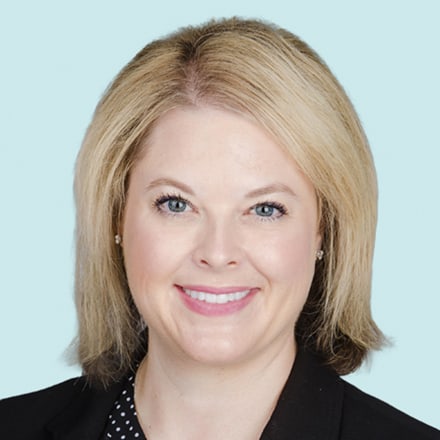Inside Angle
From 3M Health Information Systems
Three questions with Jason Burke: Autonomous coding and the cloud
I sat down with the 3M Health Information Systems VP of revenue cycle solutions Jason Burke to talk about autonomous coding and why moving to the cloud can help you scale more quickly and efficiently.
Welcome to Inside Angle! Tell us a little bit about your background and your current role.
Thanks, I’m excited to participate in this series. I’ve been with 3M for 22 years. Prior to that I was the CEO for a small family distribution company that we were able to sell. I always knew I wanted to be in health care and technology, so when an opportunity came up at 3M HIS, I jumped at the chance. I joined the sales team and learned about the health care industry from the frontlines. I served as a Six Sigma black belt for a few years, then moved into a marketing and product development role. Eventually I led our business development group where I managed vendor to vendor partnerships. Through one of those projects, I learned about commercializing a product and proving out client value. I began my current role managing our revenue cycle solutions about a year and a half ago. I am responsible for product growth, the business financials and product management for all of our revenue cycle solutions serving hospitals and physician groups.
When I’m not working, I love spending time with my family (I have four daughters!) in the great outdoors. We love traveling in our RV and spending time off the grid as much as possible.
At HIMSS this year, there was a lot of buzz around revenue cycle and automation. Can you give us a brief overview of 3M HIS’ vision for autonomous coding?
Absolutely. Automation is at the core of what we’ve been doing in the revenue cycle space for a few decades. Specifically, coding the medical record for the hospital and the physician to get paid. Coding is the lifeblood of the financial process of health care and ensures the providers are being paid correctly. Traditionally there has been a coding specialist that has a degree in coding and has learned the multitude of rules as defined by government regulations for coding accuracy. We provide expert tools and resources to help the coder quickly and correctly code the record to receive accurate reimbursement.
With pressures on hospitals and providers to reduce costs, the technology that we’ve been developing over the last five to seven years, along with deep learning models, will allow us to shift to a more autonomous environment. Our vision is to move to autonomous coding with artificial intelligence (AI) capabilities, along with the expert content we’ve built, we will be able to generate codes for a certain set of patient types without any human intervention.
The system will read the medical record, generate the code, determine the accuracy and send it straight to billing. This allows the coders to focus their time on the more complex cases that require human critical thinking and expertise. As part of the system in the cases that the AI engine has questions or isn’t confident in the code, it will send the record to a human coder for review instead of straight to billing. The system does assist the coders by auto-suggesting codes that help them do their jobs faster and more accurately.
One of the things that sets us apart from others in the industry is that we have the most used coding system in the United States. We are processing more than 65 million patient records a month and all of that data is intelligently informing this back-end system to make it as accurate as possible. We have a deep history and expertise in AI, natural language understanding (NLU) and health care specific clinical and operational expertise which gives our clients the highest level of confidence in the coding accuracy.
Health care data is the most complex data set in the world in my opinion. The challenge is that there can be multiple meanings for a word or term depending on how it is used, where it is documented and the patient situation. For example, if a physician says something like “congestive heart failure” to the system, depending on when they said it, how they said it or the situation they were in, can affect the system’s interpretation and can have a very different meaning. We bring that long-term expertise to the table when it comes to the system understanding and how the language should be interpreted, used and applied to the specific use, like coding or clinical documentation.
Speaking of autonomous and AI, the cloud is becoming more mainstream when it comes to technology. Can you talk about the benefits of moving your revenue cycle to the cloud?
The cloud is definitely becoming as technology standard in the U.S. and in other countries. One key benefit is the reduced cost of operations and IT on the hospital or provider side. This is a significant cost savings in both hard and soft costs when you look at the hardware, security and support staff required to manage on-premise systems.
Another value is the ability to scale. Depending on what cloud environment a client is using, cloud technology allows you to grow and add more servers to be able to expand the need to add and capture more data. There is unlimited opportunity with the cloud to be able to scale your business, and in health care that’s critical. That scale means you can work with big organizations, or even governments, to manage health care information and data in a much more practical way than you could with on-premise technology.
Speed is another benefit. With all of the moving and shifting in health care, there is a significant need to have more real time capabilities and real time processing. When a physician or provider is treating a patient, they need the most up-to-date and relevant information at their fingertips to help make decisions and not be overwhelmed by the amount of information and data to make those decisions. The sooner upstream we can make those improvements, the more we can impact the quality of care for the patient and the more we’re able to resolve issues that traditionally happen after a patient leaves.
Cloud speed is amazing and honestly, it’s changing the industry and allowing us to do things we only dreamed about 10-15 years ago. It’s a reality now.
Jason Burke is the vice president of revenue cycle solutions at 3M Health Information Systems.




